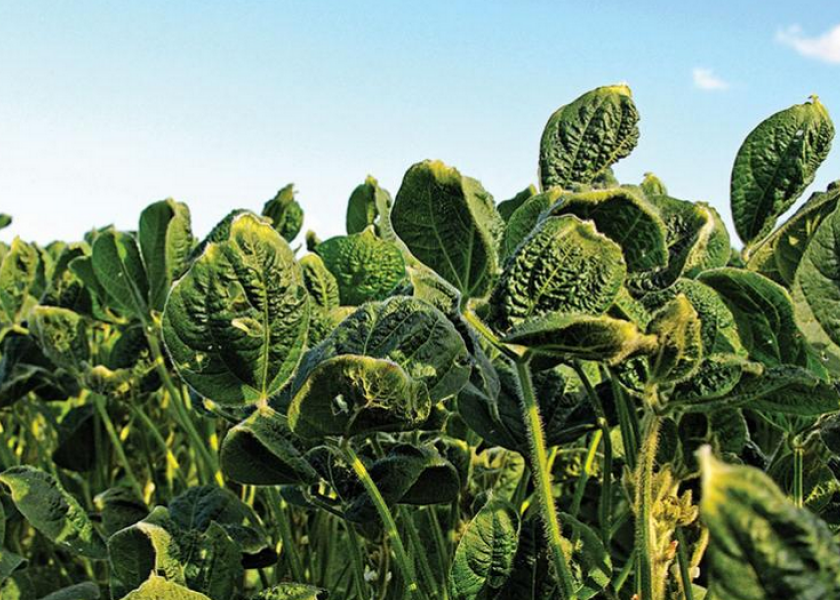EPA Issues Report Indicating More Restrictions May Be Warranted on Dicamba Use

A new report by the Environmental Protection Agency (EPA) released Tuesday shows despite increased restrictions on dicamba, more than 3,500 issues were reported this year with dicamba drifting onto other crops. In total, EPA says more than 1 million acres of non-dicamba tolerant soybeans were reported to be damaged. However, grower groups are asking for more clarity, saying EPA's data may be riddled with gaps.
The report was detailed as part of EPA's review of dicamba use and off-target movement. The agency was assessing whether dicamba can be sprayed on dicamba-tolerant crops without causing "unreasonable risks" to other crops.
“Right now we don’t know whether over-the-top dicamba can be used in a manner that doesn’t pose unreasonable risks to non-target crops and other plants,” said Michal Freedhoff, assistant administrator for the EPA’S Office of Chemical Safety and Pollution Prevention, after the report was released.
The review of dicamba by EPA also shows the off-target movement hit other crops, as well as trees, as the agency weighs whether further restrictions will be warranted to help prevent risks to other crops.
The report also indicated if additional regulatory actions are needed, those probably won't happen for the 2022 growing season, as the agency wouldn't have adequate time to fully implement them. Instead, EPA says it will work with other states to impose additional restrictions.
EPA's review also concluded the severity and geographic extent of the incidents was similar to 2020, when EPA imposed tighter restrictions on over-the-top dicamba use.
Grower Groups Ask for More Clarity
Not every agricultural group or farmer is in step with EPA's assessment. On Tuesday, the American Soybean Association (ASA), National Cotton Council (NCC) and American Farm Bureau Federation (AFBF) brought to light questions about EPA's report, while asking for more clarity.
The groups say the data, which was released by EPA on Monday, could have significant gaps. Specifically the groups say:
- It is not clear whether complaints were submitted to multiple sources/regulators and were, therefore, double-counted.
- It is unclear if EPA, state regulators, or others investigated complaints to verify injury or assess potential causes.
“The agricultural community expects regulators to be clear with the data on which they are making decisions," says Alan Meadows, a soybean grower from Halls, Tenn., who also serves as ASA director. "It is concerning the information released provides an incomplete picture. Data that is not present in this EPA release may tell as much or more about the story than what the agency has included.”
Georgia cotton producer Kent Fountain chairs the NCC grower board, and he says the EPA report contradicts the consensus among cotton growers he's talking to and hearing from across the South.
“EPA's report doesn't align with what the U.S. cotton industry has seen and heard in the field," says Fountain. "The data needs to be analyzed carefully to ensure accuracy, because dicamba is too important to our industry for decisions to be made on incomplete or faulty data.”
Dicamba Dispute
Dicamba has drawn mixed analysis and reactions from farmers and weed scientists across the country. The chemistry has been tangled in disputes since dicamba-tolerant traits were released in soybeans in 2016. Then, in 2017, EPA approved over-the-top-use of the herbicide for one year, which attracted more complaints and disputes.
But the battle over dicamba use came to the forefront in June 2020, as a U.S. appeals court blocked the sale of dicamba and ruled EPA had understated the herbicide's risk. The ruling created chaos and uncertainty for growers who were in a key time of the growing season for weed control.
Then, in October of that year, EPA re-authorized the use of dicamba-based weedkillers, invalidating the court ruling. The re-authorization was good for five years.
Growers who use dicamba argue it's an effective tool in controlling weeds that are resistant to glyphosate and glufosinate. However, some growers who plant crops without the dicamba-tolerant traits say dicamba drifts, causing damage to their crops.
As growers make plans for the 2022 growing season, this adds another level of uncertainty, as farmers wade through supply chain issues and questionable supplies. Farmers have reported glyphosate and glufosinate prices have soared, but it's availability that remains the biggest question for American farmers heading into 2022.
The EPA said it received about 3,500 reports this year indicating that more than 1 million acres of non-dicamba-tolerant soybean crops were allegedly damaged when the chemical drifted from where it was applied. Trees and crops like rice and grapes also suffered damage, the agency said.







